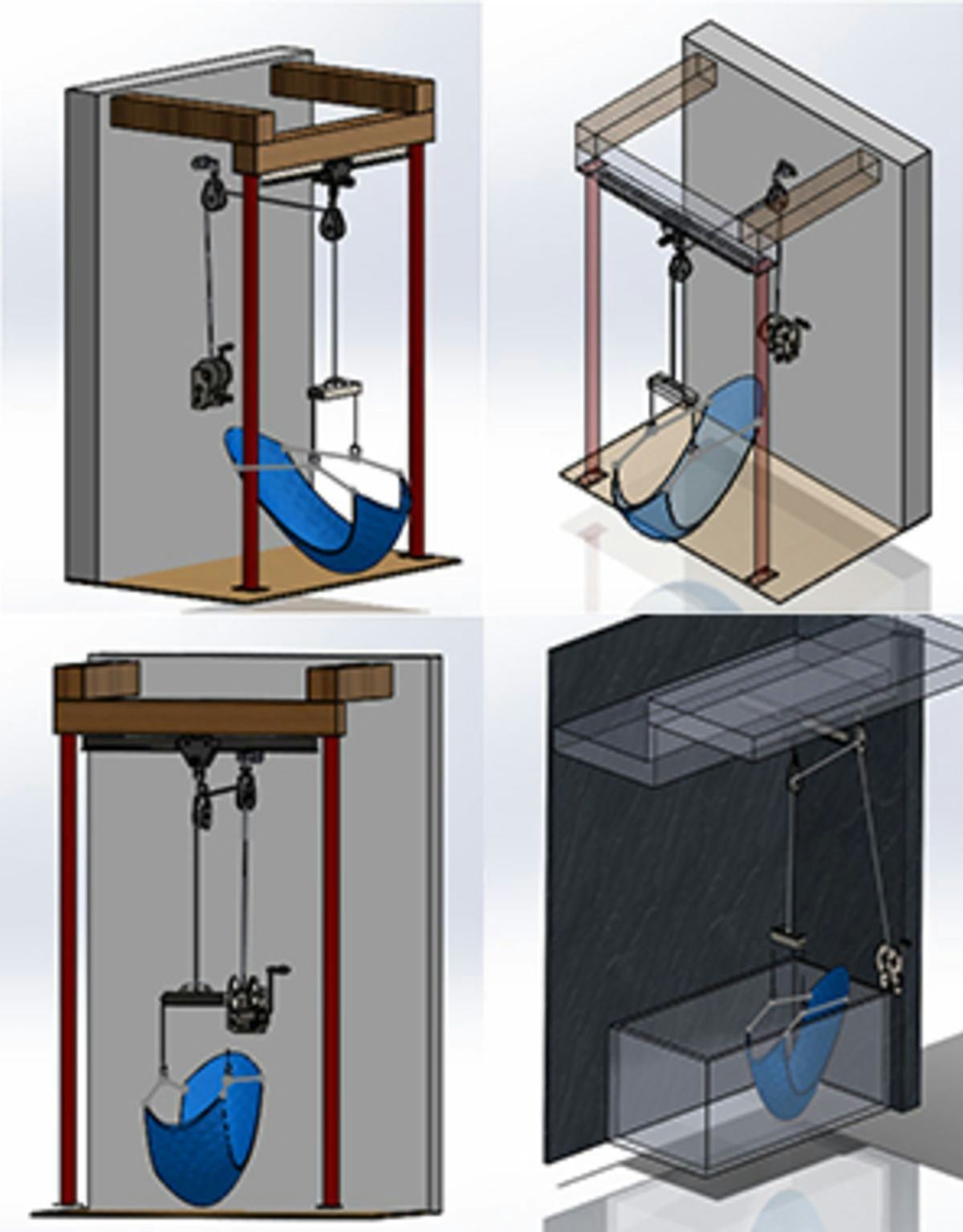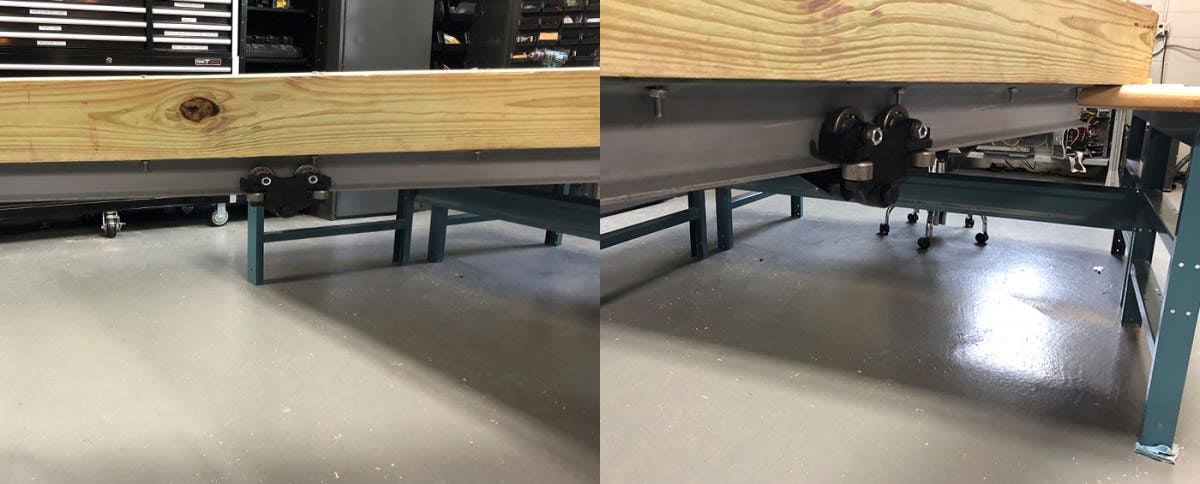Stevens Students Design a Device to Help Parents Bathe Their Disabled Son
Inspired by an eight-year-old, the team’s apparatus is intended to move a wheelchair-bound 30-year-old into and out of the bathtub
Physical disabilities can make daily activities such as bathing a significant challenge for nearly 75 million people in America, from the elderly to those dealing with multiple sclerosis, ALS and other illnesses.
Five mechanical engineering seniors from Stevens Institute of Technology are on a mission to solve that problem for at least one person: Peter, a 30-year-old man whose severe cerebral palsy has left him unable to walk or talk. They’ll unveil their design at the annual Stevens Innovation Expo on Wednesday, May 2.
"This product can truly change lives," says Nicole Maetta, who teamed up with fellow students Paul Chuquimarca, Luis Flores, Bridget Reed and Emma Sennett-Kuzin to address Peter’s situation.
But the project wouldn’t exist without the passion and compassion of one extraordinary third-grader.
Answering Valentina’s heartfelt request
After eight year-old Valentina’s godfather told her about attending Peter’s thirtieth birthday party, she immediately sprang into action.
"I felt bad Peter couldn’t do things I could, and I wanted to help," says Valentina, whose initial ideas included an automated car and a robot resembling Peter’s favorite character, Elmo. The young philanthropist then took the obvious next step: she insisted on meeting with her grandmother’s boss.
It wasn’t an outrageous request. Valentina’s grandmother is Elaine Chichizola, executive assistant in Stevens’ Department of Mechanical Engineering. Frank Fisher, professor and interim department chair, not only met with Valentina but also included her request among the senior capstone project options. A team of Stevens students caught Valentina’s infectious enthusiasm for helping Peter.
Showering the project with creativity
"We met with the family and discussed their daily needs–how Peter eats, sleeps and gets around," says Sennett-Kuzin. "His parents have modified their house in many ways, but they still use a bath towel to move him into and out of the tub, and the physical strain is becoming too much. We decided to solve that problem with a lifting and transportation mechanism."
Although the family had previously purchased an expensive device for that purpose, it was too big for their bathroom, as were the other options the Stevens team found already on the market.
"It’s the only bathroom in the house, and everyone including Peter’s elderly grandmother, uses it," Maetta explains. "The device cannot obstruct the bathroom in any way."
The team researched, brainstormed and ran risk analyses and data analysis modeling to zero in on the least obtrusive, simplest option.
"We created a trolley and pulley system attached to a steel I-beam, which is attached to a ceiling beam over the bathtub and has a cord running down the wall," Flores says. "Cranking the braking winch raises or lowers the mesh sling seat, and a mechanical device drives the pulley to move the seat horizontally to or from the tub. Everything is water-resistant to prevent corrosion. And since Peter’s mom also gets in the shower to bathe him, our design preserves maximum room for both of them."
Safety was paramount in the design.
"The individual with the disability needs to operate most of the existing mechanisms, but Peter can’t do that, so we had to keep him safe while someone else operated the system," Chuquimarca notes. "His parents can put the mesh seat in the wheelchair, then put him in the seat and hook it to a stabilizing bar. A harness keeps him from moving, and once in the tub, he can either stay in the seat or sit in the tub."
Adding to the project complexity is the lack of an actual bathroom to house the prototype.
"We had to design and build the mechanism, and we had to create a structure strong enough to test and display it safely," Maetta says. "In addition, the family’s bathroom ceiling height is different between the bathroom and the tub, so we had to account for that change in elevation. But now that we have solved that challenge, this apparatus could be installed on a flat or multi-leveled ceiling, making it more versatile for potential use in hospitals, nursing homes and other facilities."
But the team has remained focused on just one home: Peter’s. "The family is so excited, and their level of enthusiasm is very rewarding," Reed says. "We have sent them regular progress reports, and we can’t wait to show them the finished design and give them our specifications and drawings so they can have our design installed in their home.
Rewarding progress in service to their community
Remarkably, the Stevens students didn’t even know each other before they began working on this project last fall.
"They quickly came together, organizing themselves, figuring out their individual and collective strengths and weaknesses, assigning tasks and contributing to the project’s success," says their advisor, Maxine Fontaine, assistant professor of mechanical engineering at Stevens. "Every month they discuss their progress in front of a panel of experts. They have been great about applying feedback to improve their design so they can fulfill their biggest motivation to help someone in their community."
Sennett-Kuzin agrees. "All our folders and reports show a picture of us with Peter," she says, "That way, we can literally see our goal. It’s not just calculations for the sake of calculations. It’s deeply rewarding that our senior project can make an impact on this family and hopefully on families around the world."
The project is also having an impact on a certain determined young lady.
"I am so excited and happy that the students chose my idea," Valentina says. "I want them to build more things, like a robot to help people with disabilities work and feed themselves and get dressed and do the things my family and I can do. Someday I want to go to school where my grandmom works. I want to be an engineer—I love building!"
See this project and many others at the 2018 Stevens Innovation Expo on May 2.




